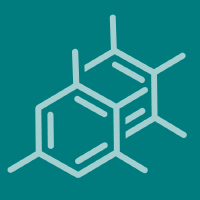Topic Editors


Research on Natural Products of Medical Plants
Topic Information
Dear Colleagues,
For millennia, medicinal plants have been a valuable source of therapeutic agents, and many of today's drugs are plant-derived natural products or their derivatives. Natural products and their biological activities are a subject of great interest in the pharmaceutical, health food, and cosmetics industries. The number of scientific studies in this field is increasing rapidly. Natural compounds have demonstrated anticancer, immunostimulating, anti-inflammatory, antioxidant, neuroprotective, and hepatoprotective properties. Of the drugs approved between 1981 and 2019, 3.8% correspond to unaltered natural products and 18.9% are natural product derivates. Natural products have a significant role in drug discovery, and new studies with natural compounds are increasingly required to elucidate the molecular and pharmacological mechanisms needed to increase our clinical arsenal in the treatment of several diseases.
Prof. Dr. Cristiane Aguiar Da Costa
Prof. Dr. Graziele Freitas De Bem
Topic Editors
Keywords
- natural products
- plants
- medical plants
- pharmacology
- ethnopharmacology
- polyphenols
- biological compounds
Participating Journals
| Journal Name | Impact Factor | CiteScore | Launched Year | First Decision (median) | APC | |
|---|---|---|---|---|---|---|

Compounds
|
- | 2.3 | 2021 | 32.5 Days | CHF 1000 | Submit |

Medicines
|
- | - | 2014 | 28.6 Days | CHF 1400 | Submit |

Molecules
|
4.2 | 7.4 | 1996 | 15.1 Days | CHF 2700 | Submit |

Plants
|
4.0 | 6.5 | 2012 | 18.9 Days | CHF 2700 | Submit |

Separations
|
2.5 | 3.0 | 2014 | 15.1 Days | CHF 2600 | Submit |

MDPI Topics is cooperating with Preprints.org and has built a direct connection between MDPI journals and Preprints.org. Authors are encouraged to enjoy the benefits by posting a preprint at Preprints.org prior to publication:
- Immediately share your ideas ahead of publication and establish your research priority;
- Protect your idea from being stolen with this time-stamped preprint article;
- Enhance the exposure and impact of your research;
- Receive feedback from your peers in advance;
- Have it indexed in Web of Science (Preprint Citation Index), Google Scholar, Crossref, SHARE, PrePubMed, Scilit and Europe PMC.

